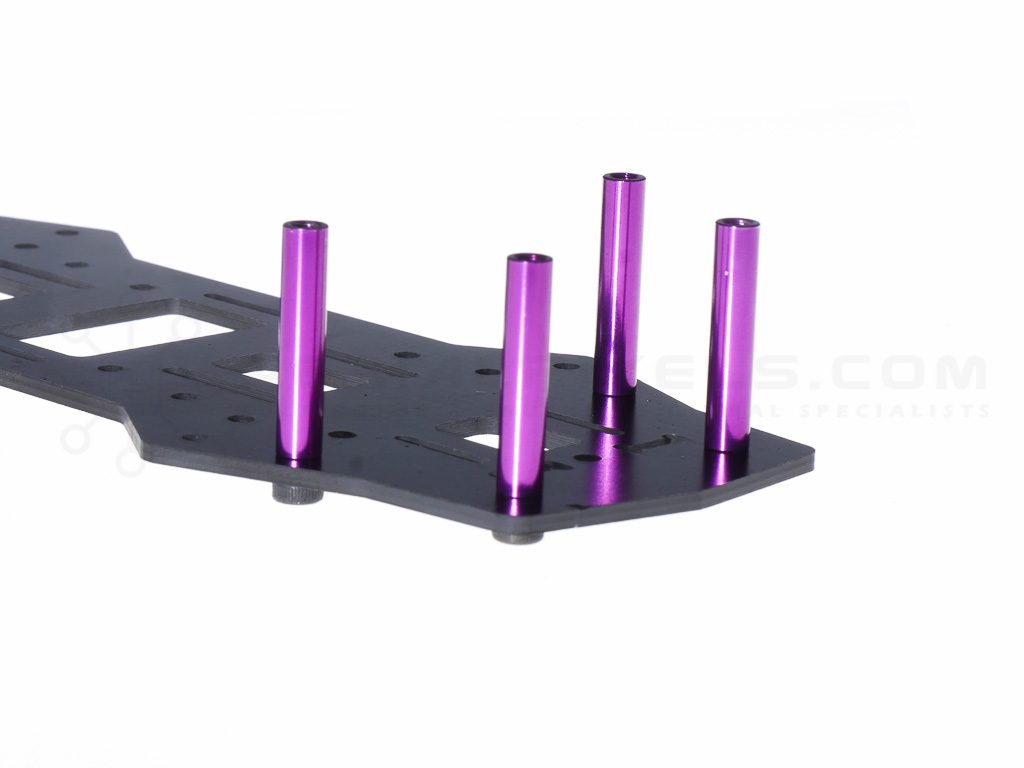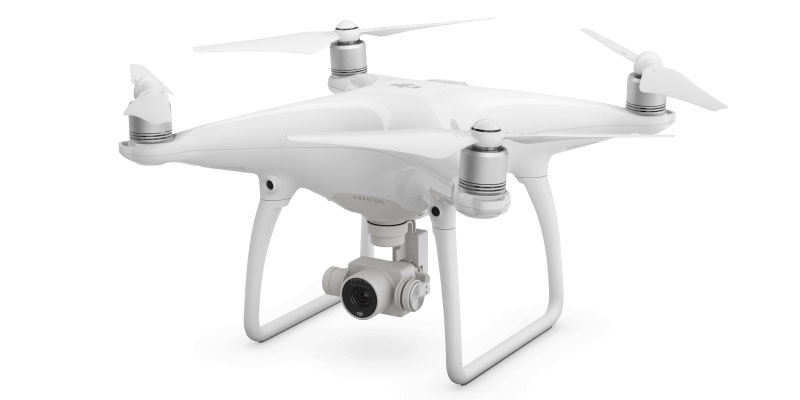
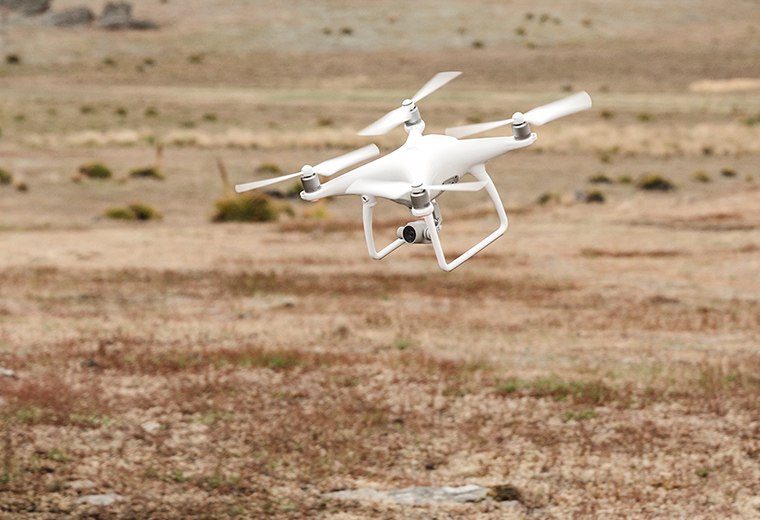
REVOLUTIONARY MATERIALS AND REFINED AERODYNAMICS
A new, specially designed, magnesium core increases the stiffness and rigidity of the Phantom 4 without compromising weight. Working in tandem with the battery, it lifts the center of gravity closer to the level of the props which increases agility and responsiveness. This is all placed within a sleek and aerodynamically efficient shell.

MULTIPLE FLIGHT MODES
The Phantom 4 is flexible enough to meet different flying demands. In Position mode you can use satellite and Vision Positioning, TapFly, ActiveTrack and Intelligent Flight Modes. Sport mode adds extra agility and speed, reaching 45mph (72kph) while maintaining satellite and Vision Positioning systems. Atti holds the Phantom’s altitude and level but switches off satellite positioning making it ideal for smooth film making movements.
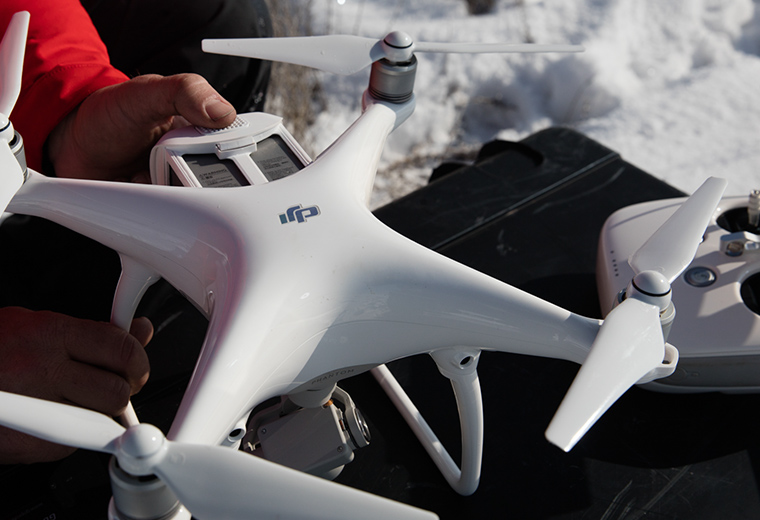
FLY FAR FOR LONGER
High efficiency motors and a custom designed large capacity battery offers 5350mah of power, giving the Phantom 4 a 28* minute flying time. Integrated power management, balanced charging capabilities plus smart charge and discharge protection keep the battery easy to charge and ready to fly at maximum capacity. Integrated Lightbridge technology allows you to see what the Phantom sees in 720p HD at up to 3.1mi (5km)** away. This low latency video transmission technology is extremely resistant to interference, giving you more control over your flight.
*In calm conditions with constant speed.
**Maximum range tested in unobstructed areas free of interference and may vary depending on local regulations.
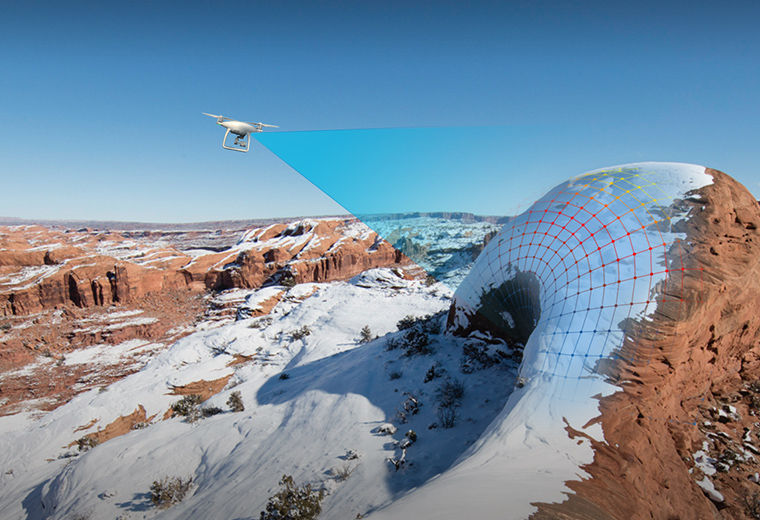
SENSE AND AVOID
We all use our eyes to see and interact with the world. A forward Obstacle Sensing System gives the Phantom 4 it its own pair of eyes, empowering it to see in three dimensions and to react. In Normal Mode if it sees an obstacle coming close it will stop and hover. In TapFly, ActiveTrack and Smart Return Home modes it will avoid the obstacle, or hover to avoid a collision. It also gives you warnings so you always know what is happening to the Phantom. The downward facing Vision Positioning module contains dual cameras and dual ultrasonic sensors to offer five times more positioning accuracy than previous systems. Used indoors, it provides a GPS-like flying experience, giving you the confidence you need to fly indoors.
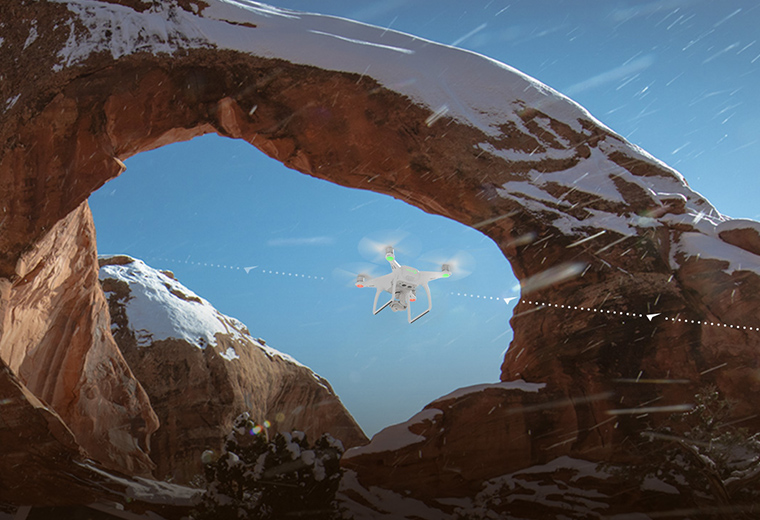
TAPFLY
In TapFly mode, all you have to do to fly is tap on the screen of your smartphone or tablet. To change the direction of flight, you can simply tap the screen to fly anywhere. Flying using control sticks and maintaining altitude, course and speed can be challenging, so TapFly takes over all of these controls for you leaving you to focus on your shot. Using its Obstacle Sensing System, the Phantom 4 can fly places you might not have gone before, to create dynamic and inspiring footage. Through DJI GO you can also activate Smart Return Home which allows the Phantom to avoid obstacles as it returns.

ACTIVETRACK
ActiveTrack makes science fiction a reality. Whether you are running, driving, rafting and more, the Phantom 4 uses an advanced combination of computer vision, object recognition and machine learning to track you as you go. Circling a moving object used to only be achievable by the most seasoned of pilots, now everyone can do it with a flick of the thumb. The entire time that ActiveTrack is running obstacle avoidance is too, so it will decide whether it should continue following, avoid an obstacle or simply stop.
Available soon






